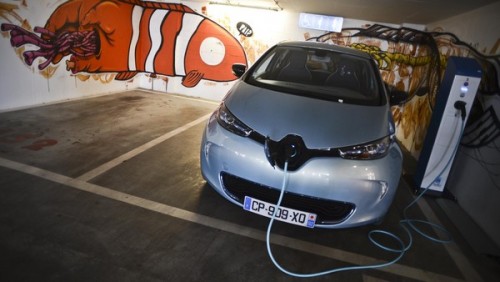October 30, 2015 – Back in April 2012 I wrote about the future of battery technology and IBM’s Battery 500 project, aimed at delivering 1,000 times more energy than current lithium-ion technology. Three years later a commercial lithium-air battery has yet to arrive on the scene. But that hasn’t stopped researchers from pursuing what they believe will be a transformative storage technology.
A battery capable of breathing air takes the oxidizer part out of the equation once and for all. This type of battery is far lighter and capable of much greater capacity. The IBM research taking place at Almaden Research Lab, San Jose, California and Zurich Research Lab, in Switzerland, was capable of generating 1,500 to 2,000 kilowatts per kilogram of weight, ten times the capacity of similar weight lithium-ion technology. The knock was on battery life. The technology was incapable of the same number of charge and discharge cycles of current lithium-ion batteries. But in 2014 IBM stepped away from its research into lithium-air. An article appearing in Nature suggested that the company’s research was moving to breathable batteries using sodium finding that sodium-air batteries recharged more efficiently than lithium-air. Now BASF is on board working with IBM on a sodium-oxygen battery designed for renewable power storage on a utility scale. The researchers aren’t sure they can scale such a battery down to be an alternative plant for an electric vehicle, at least not for the moment.
Enter Cambridge University in the United Kingdom where Clare Grey, a chemistry professor, has led a team on a technology quest to develop lithium-air batteries that can fit in an automobile form factor. Their current laboratory demonstrator weighs one-fifth that of a lithium-ion battery pack suitable for powering an electric vehicle (EV). Using a graphene oxide electrode, the team has produced a battery with impressive rechargeability (the challenge that IBM faced) along with great performance.
The Cambridge lab system is 90% efficient and capable of 2,000 discharges and recharges. The authors of the paper appearing in Science, entitled, “Cycling Li-O2 batteries via LiOH formation and decomposition” believe they need about a decade more work to launch the battery into commercial applications capable of scaling from an EV to a utility-sized storage array to backup wind and solar power. The Cambridge lab has patented their work and the commercial arm of the university, Cambridge Enterprise, is working with a number of companies to bring the technology to market.
So it seems we have an arms race in battery storage going on. Last week I wrote about potassium-ion batteries and their promise. Another potential disruptive storage technology is aluminum-air which I also wrote about in June 2014. So it would seem that aspiring engineers and scientists couldn’t pick a better field than storage these days as the world begins its transition from fossil fuels to low carbon energy solutions to help combat global warming.



















